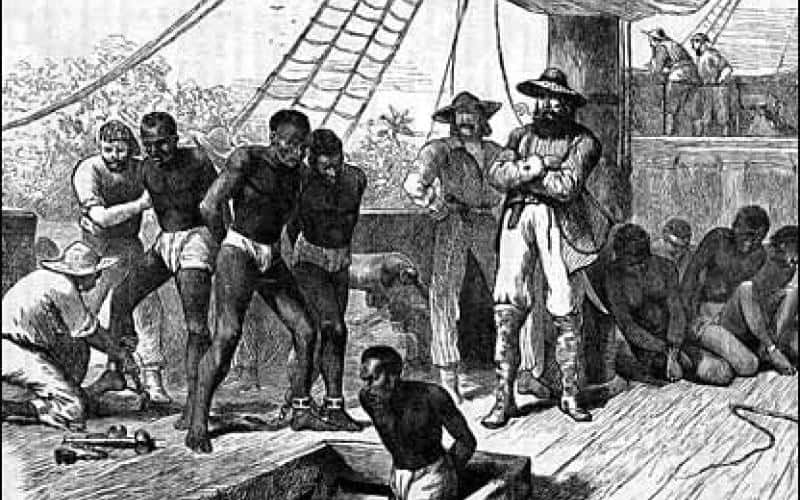
At the point when the historical backdrop of Africa and its vicious communication with the outside world is delineated for, next to no is said about the Bedouin world. Numerous individuals in the English-talking world accept that the assault, hijack and subjugation of Africans began during the 1600s, with the Europeans; however that is a long way from reality.
For many years before the Europeans occupied with the slave exchange, Bedouins were at that point assaulting African urban areas, towns, and settlements and taking captives to endure and bite the dust in the Bedouin world.
The Zanj disobedience is archived to be the best obstruction and defiance did by subjugated Africans, who were predominantly from East-Africa. The resistance was a wicked and merciless uprising against the Islamic Abbasid Caliphate. Students of history and researchers have ordered the disobedience as one of the bloodiest and most dangerous throughout the entire existence of Western Asia.
A Foundation Of The Subjugated Zanj Individuals Of Africa
The Zanj is a Bantu talking individuals who occupy the South-Eastern area of Africa. Zanj is at times likewise called Zenj or Zinj, and signifies “Nation of the Dark” OR “nation of the dim cleaned individuals”. The domain of the Zanj individuals stretch from Present say Ras Kamboni in the South, to the Pemba Islands in Tanzania.
They were utilized for farming work by the individuals of southern Iraq, to help the manor economy of the area. Much the same as all aspects of the reality where Africans were taken and detained without wanting to, the elites needed to be more extravagant yet didn’t have any designs to pay for the work to develop the land.
With more grounds to cultivate, and progressively world-class voracity, the Zanj individuals were sort after by the elites of the port city of Basra, and a greater amount of them was imported from South-East Africa. The elites of the port city of Basra procured a broad and massive region of deserted marshland, which extended outside the city.
Because of continued flooding, the grounds were relinquished. Yet, the elites needed to restore the properties, and they set out on the repetitive assignment with the perspiration and blood of the Zanj, among other oppressed individuals.
The subjugated Zanj individuals and other oppressed Africans were set in camps and compelled to expel the topsoil which was secured with nitrous, in a procedure to restore the land. Some other Zanj individuals were sent to work and drudge in the salt pads of lower Iraq, and the territories encompassing the city of Basra.
The elites who oppressed the Zanj and different Africans couldn’t have cared less for their working and living conditions. It was a tarnished and hopeless spot for people to be. The poor living conditions and harsh framework in Basra made the subjugated Africans revolt from 689-694; however, it was not fruitful.
By 861, the Abbasid government which maintained the oppression of Africans began to include effective tumult inside its positions. In a power battle known as the Political agitation at Samarra, between the caliphs and the military, the focal government was injured. This likewise prompted a conventional war between 865-866.
The insecurity in the Abbasid system was what made the empowering condition for the Zanj resistance. The administration was losing cash from assessment in light of the confusion; thus, they couldn’t pay for the military to smother the opposition when it began.
The Record Of The Resistance
The Zanj rebellion by the Bantu speaking people of South-Eastern Africa, together with other Africans, started in September of 869. They concentrated their revolt in the districts of Iraq and Al-Ahwaz, which is today’s, Khuzestan Province. These districts were the central regions of the Abbasid caliphate and held much of the slaves.
The Zanj rebels launched all forms of military attacks on the Abbasid government for 14 years. They were skilled in guerilla warfare. They raided towns and cities of their enemies and enslaves and seized food, horses, and weapons. After each raid, they would burn the village, to delay and prevent retaliation. They also freed other enslaved Africans who joined their course.
As the years passed by, the Zanj rebels grew in military and organizational strength. They began to build fortresses and broad bases. They built ships/boats and trained naval officers who would transverse the canals and rivers of the region they controlled. They also went as far as collecting tax in the areas they managed and minted their coins
When the rebellion started, it was focused only in and around the port city of Basra and the Blind Tigris. The Abbasid government tried its best to crush the Zanj rebels, but they failed. The more the government decided, the more the Zanj rebels seized more towns and cities. In 870, the Zanj rebels seized the village of al-Ubulla, and in 871, they took the town of Suq al-Ahwaz.
The rebels set up and imposed a protracted blockade on the city of Basra, which led to the fall of the village in September of 871. The Zanj rebels burnt the town to the ground and massacred the elites who inhabited it.
The sacking of the city of Basra angered the Caliphate regent, Abu Ahmad ibn al-Mutawakkil, to organize a considerable force in 872, in retaliation, but they failed to cripple the Zanj rebellion. The Zanj rebels continued their offensive for years to come.
The Zanj Rebels advanced their campaign to the Northern part of the Abbasid territory. In 876, they occupied the marshlands between Basra and Wasit, and after that, they developed into the district of Kaskar.
By 879, the Zanj insubordination was terrific to the point that it compromised the whole Middle Easterner locale. They developed in number, quality, and a tricky bit of leeway. They proceeded to sack the urban areas of Wasit and Ramhurmuz, after which they coordinated on toward the Northwest region of the Tigris waterway. This specific development got them near Baghdad.
In that equivalent year, the Abbasid government began to gain some ground against the Zanj Revolutionaries, who had overstretched their cutoff points. The caliph, al-Muwaffaq, sent his child Abu al-‘Abbas, with a mighty power of their military to pulverize the radicals.
The caliph himself likewise joined the hostile the following year, and for the months that pursued the Abbasid, powers made genuine achievements in pushing back the Zanj renegades and reclaiming the regions of Iraq and al-Ahwaz. The Zanj radicals had no choice than to come back to their capital in al-Mukhtarah, which was in the south of Basra.
While the African Zanj agitators were enclosed within al-Mukhtarah, the Abbasid government powers laid attack on the city in the February of 881. This attack proceeded for another more than two years, driving a portion of the worn-out radicals to gives up to the terms of the tranquility of the Abbasid government.
Al-Mukhtarah fell in August of 883. The agitator’s heads were captured, slaughtered or detained by the Abbasid government. Numerous students of history have accounted that the Zanj Renegades were driven by ‘Ali ibn Muhammad, who is said to be a relative of the prophet Muhammed. Much about him isn’t caught in this article, yet he is said to be a significant power in the disobedience.
Toward the finish of the insubordination, the two sides checked their misfortunes, both in human, social, and financial assets. A few history specialists who have composed on this disobedience have said that the loss of life came to over 2.5 million individuals.
Students of history have set the Zanj resistance at the exceptionally top of the uprisings by Africans while they were subjugated in outside grounds. In spite of the fact that there were increasingly lengthened uprisings in the Americas, this one stands apart as a result of its parts and the administration that the renegades set up to power such an insubordination.
Conclusion
It would be some degree hard for some Africans to accept that Africans were sold into bondage in the Middle Easterner world, for right around 1,000 years before the Trans-Atlantic slave exchange began during the 1600s.
While Africans have concentrated on talking about the occasions of the Trans-Atlantic subjugation and the abhorrence on the ranches of the Americas and Europe, less consideration has been given to the circumstances of the oppression of Africans in the Middle Easterner world.
One reason for this may be the language boundary. Since numerous Africans home and abroad communicate in English or French, the plausibility of this story to be deciphered and shared crosswise over landmasses is upset.
This record of history demonstrates that for over 1,000 years, Africans have been doing combating powers inside and without. Powers to try and quell the individuals and destroy the labour and assets of an entire age.
We recount this story with satisfaction. We narrate to this story to adulate the flexible African soul that has consistently opposed the mistreatment of various sorts. Never throughout the entire existence of the world have Africans acknowledged bondage wholeheartedly. African people have battled and kicked the bucket to oppose the suppression conduct of the Middle Easterner and European individuals.
Indeed, even at this very moment, subjugation still goes on in various structures. It is significant that we draw quality from the valiance and triumphs of our precursors and take definitive activities in opposing the foe.




